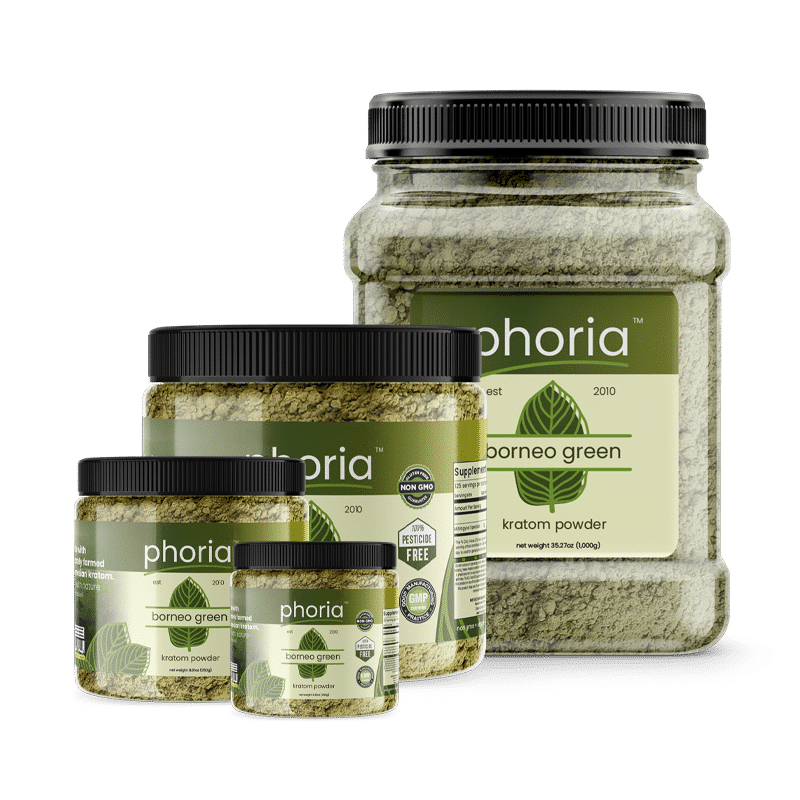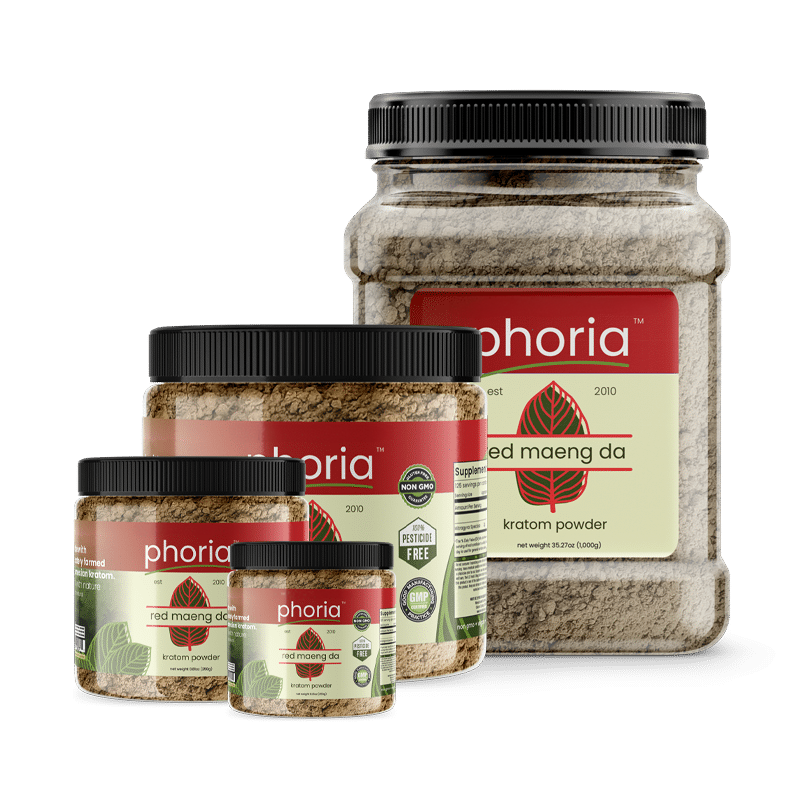As a kratom and coffee plant expert, I cannot help but notice the striking similarities between these two seemingly unrelated plants. Both of them are popular among millions of people all over the world for their energizing effects, despite being vastly different in terms of origin, appearance, and chemical composition.
For starters, both kratom and coffee plants belong to the family Rubiaceae, which comprises around 13,000 species of flowering plants. This means that they share many genetic traits that make them similar in some ways.
However, it is not just their botanical classification that sets them apart from other stimulants; rather, it is how they affect our mind and body that makes them stand out. In this article, we will explore the fascinating parallels between kratom and coffee plants and shed light on why they have become such integral parts of human culture worldwide.
The Botanical Classification Of Kratom And Coffee Plants
As a kratom and coffee plant expert, I can tell you that these two botanical species share some commonalities. One of the most striking similarities is their placement in the same family, Rubiaceae. This family consists of over 13,000 different species of plants found around the world.
Both kratom and coffee plants belong to the subfamily Cinchonoideae within this family. Plant morphology also reveals interesting parallels between kratom and coffee plants. They are both evergreen trees or shrubs with leaves that are simple, opposite, and ovate-shaped. The leaves contain veins that run parallel to one another along the length of each leaf blade.
Additionally, both plants produce small white flowers that grow in clusters on short stems arising from axillary buds located near the base of new growth shoots. Geographical distribution further highlights how similar kratom and coffee plants truly are. These two species originally hail from Southeast Asia and East Africa respectively.
However, they have since been cultivated across many other tropical regions worldwide due to their popularity as herbal remedies or stimulants among various cultures throughout history.
Genetic Traits Shared By Rubiaceae Family Members
Did you know that the kratom plant and coffee plant are both part of the Rubiaceae family? This fascinating fact is not well-known to many, but it highlights some genetic traits shared by members of this vast botanical family. Evolutionary adaptations have led to similarities in the plants’ structures, including their leaves and flowers.
Here are four more interesting genetic traits shared by Rubiaceae family members like kratom and coffee plants:
- Many species in this family produce alkaloids, which give them medicinal properties.
- The fruits of these plants often contain two seeds with a thin layer between them, indicating a close evolutionary relationship.
- Leaves from certain species can be used for pain relief or as stimulants.
- Members of this family tend to grow in tropical regions around the world.
As an expert on both kratom and coffee plants, I find it fascinating how much they share genetically despite being vastly different in appearance and use. These similarities offer insights into how plants evolve over time and adapt to their environments.
Additionally, understanding these commonalities may help researchers discover new medicinal properties within other Rubiaceae family members.
Stimulating Effects On Mind And Body
Kratom and coffee both have stimulating effects on the mind and body, and it’s important to understand the similarities and differences between the two.
Mentally, both kratom and coffee can provide a boost of energy and alertness, but kratom offers more of a sense of relaxation, while coffee can be more stimulating and energizing.
Physically, both kratom and coffee can provide increased energy and focus, but kratom has more of a calming effect, while coffee can be more energizing and stimulating.
Mental Stimulation
As a kratom and coffee plant expert, I must emphasize that both plants share an interesting similarity in terms of their stimulating effects on the mind.
Kratom is well-known for its cognitive-enhancing properties, improving mental clarity, focus and alertness. This makes it an excellent choice for students or professionals who need to stay productive throughout the day.
Similarly, coffee also acts as a mood enhancer by increasing dopamine levels in the brain, which promotes feelings of happiness and pleasure.
Both kratom and coffee can provide a much-needed boost to those feeling mentally fatigued or stressed out.
Overall, while these two plants have different chemical compounds working within them, they both offer similar benefits when it comes to mental stimulation.
Physical Stimulation
As a kratom and coffee plant expert, it’s essential to discuss the stimulating effects of these two plants on physical endurance and athletic performance.
Kratom is known for its ability to increase energy levels, making it an ideal choice for athletes who need a boost before hitting the gym or playing sports. It can also improve stamina and reduce fatigue during prolonged physical activity, allowing individuals to push themselves harder than they would without kratom.
Similarly, coffee has been shown to enhance athletic performance by increasing adrenaline levels in the body. This can lead to improved reaction times, better coordination, and increased overall physical output. Additionally, caffeine found in coffee helps muscles use fatty acids as fuel instead of glycogen stores which delays muscle fatigue during exercise.
Overall, both kratom and coffee provide excellent benefits when it comes to improving physical stimulation and endurance during training or competition. As a result, many fitness enthusiasts incorporate these plants into their pre-workout routine for optimal results.
Differences In Chemical Composition
While kratom and coffee share some similarities, they also have a number of differences in their chemical composition.
One important factor to consider is the presence of active alkaloids. Kratom contains mitragynine and 7-hydroxymitragynine, which interact with opioid receptors in the brain to produce analgesic effects. Coffee, on the other hand, contains caffeine, which acts as a stimulant by blocking adenosine receptors in the brain.
Another key difference between these two plants is their overall pharmacological effects. While both can improve focus and energy levels, kratom has been shown to possess additional benefits such as pain relief and anxiety reduction. However, this comes at a cost – prolonged use of kratom can lead to tolerance and dependence.
Conversely, while coffee may cause jitters or insomnia if consumed in excess, it does not carry the same risk of addiction as kratom.
Overall, while kratom and coffee may seem similar on the surface due to their stimulating properties, examining their unique chemical compositions reveals significant differences in terms of active alkaloids and pharmacological effects.
Cultural Significance And Historical Use
While kratom and coffee may seem like two completely different plants, they actually have more in common than one might think. Both are members of the Rubiaceae family and contain alkaloids that provide stimulating effects.
In fact, many people who use kratom as a natural remedy for fatigue often compare its energizing properties to those of caffeine found in coffee. However, despite their similarities in chemical composition, the cultural significance and historical use of these plants differ greatly.
Coffee has been a staple beverage for centuries across various cultures around the world, with social gatherings centered around sharing a cup of coffee. On the other hand, kratom’s usage is more niche and concentrated within certain regions such as Southeast Asia where it has been used traditionally for medicinal purposes.
The plant holds significant cultural practices among indigenous communities but remains relatively unknown outside of that region.
Frequently Asked Questions
How Is The Taste Of Kratom Compared To Coffee?
When it comes to the taste of kratom and coffee, there are some similarities and differences that set them apart. Both plants have a certain level of bitterness in their flavor profile, but kratom tends to be more bitter than coffee due to its unique alkaloid composition.
In terms of sensory experience, both plants offer a distinct aroma and taste that can provide an enjoyable experience for those who appreciate them. However, while coffee is often consumed for its energizing effects, kratom has been known for centuries as a natural pain reliever and mood enhancer.
As a kratom and coffee plant expert, I would recommend trying both plants to fully understand their individual tastes and benefits.
Can Kratom Be Used As A Substitute For Coffee?
As a kratom and coffee plant expert, I can say that while the two plants have similarities in terms of their effects on energy and focus, they also have distinct benefits and drawbacks.
Kratom is often touted as a natural alternative to caffeine for alertness and productivity, but it comes with potential side effects such as nausea and addiction.
On the other hand, coffee may be more widely accepted and easier to consume, but its highs and crashes can disrupt one’s ability to concentrate over time.
While kratom can be used as a substitute for coffee in some cases, it ultimately depends on an individual’s preference and tolerance level.
It’s important to understand the nuances of each plant before making any decisions about incorporating them into your daily routine.
What Are The Long-Term Health Effects Of Using Kratom And Coffee?
As a kratom and coffee plant expert, it is important to consider the long-term safety of using these substances. While both kratom and coffee have been used for centuries as natural stimulants, there are potential risks associated with their prolonged use.
Kratom has been linked to liver damage and addiction, while excessive consumption of caffeine from coffee can lead to heart palpitations and insomnia. It is crucial for individuals who regularly consume these substances to monitor their intake and be aware of any negative effects on their health.
As with any substance, moderation is key in ensuring the safest possible experience.
How Do The Growing Conditions Of Kratom And Coffee Plants Differ?
As a kratom and coffee plant expert, it is crucial to understand the differences in growing conditions for these two plants.
While both thrive in tropical climates, there are significant distinctions when it comes to soil quality.
Kratom requires a more acidic and well-draining soil compared to coffee which prefers richer soils with higher organic matter content.
To put it simply, the growing conditions of kratom and coffee plants differ like night and day.
In fact, comparing their requirements is akin to contrasting an eagle with a swallow – both birds yet vastly different.
Understanding these nuances is essential for ensuring optimal growth and harvest yields for each plant species.
Are There Any Known Interactions Between Kratom And Coffee Consumption?
As a kratom and coffee plant expert, I can say that there is some evidence suggesting compatibility between the two.
While both plants contain caffeine, which can make consumption of large amounts problematic for some people, many users report experiencing a unique synergy when combining them in moderate amounts.
However, it’s important to note that these effects may vary depending on an individual’s tolerance levels and other factors such as age and weight.
Overall, while more research is needed to fully understand the potential interactions between kratom and coffee consumption, many users find that they complement each other well when used appropriately.
Conclusion
As a kratom and coffee plant expert, it’s clear that these two plants have many similarities. Not only do they both contain stimulating alkaloids, but they also share similar growing conditions such as warm temperatures and high humidity.
However, some people may argue that using kratom as a substitute for coffee is not recommended due to its potential long-term health effects. While it’s true that excessive use of either substance can lead to negative side effects, moderate consumption of both kratom and coffee has been shown to provide numerous benefits.
As with any natural substance, it’s important to approach them with caution and be mindful of your individual tolerance levels.
Whether you prefer the taste of coffee or kratom, incorporating these plants into your daily routine can offer a boost in energy and mood. Just remember to consume them responsibly and always consult with a healthcare professional before starting any new supplement regimen.










